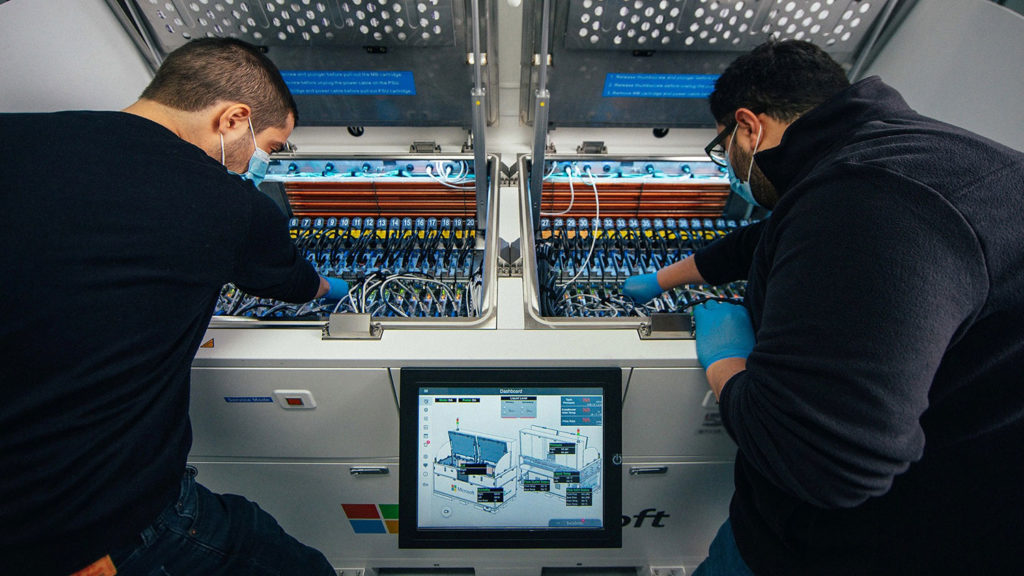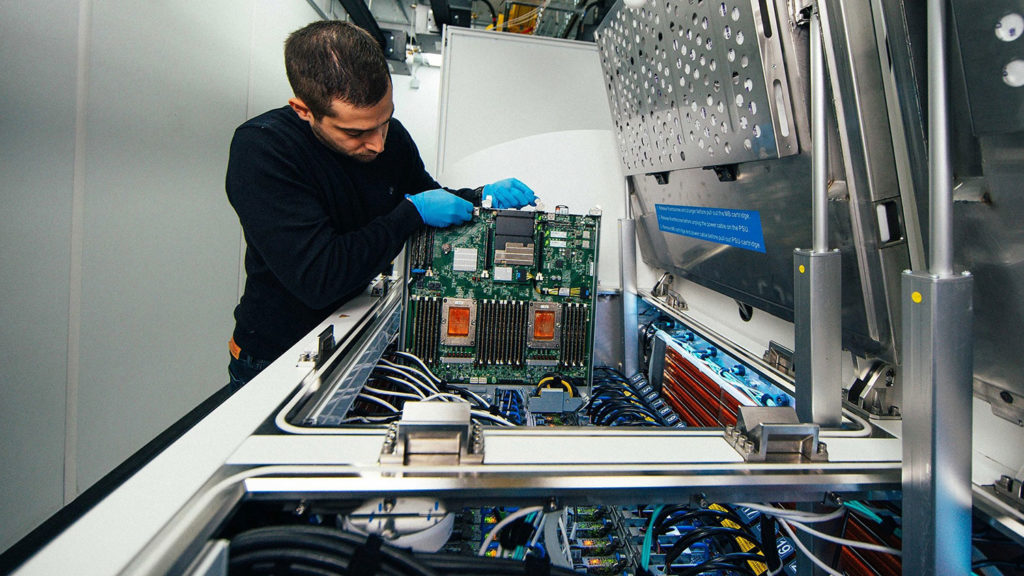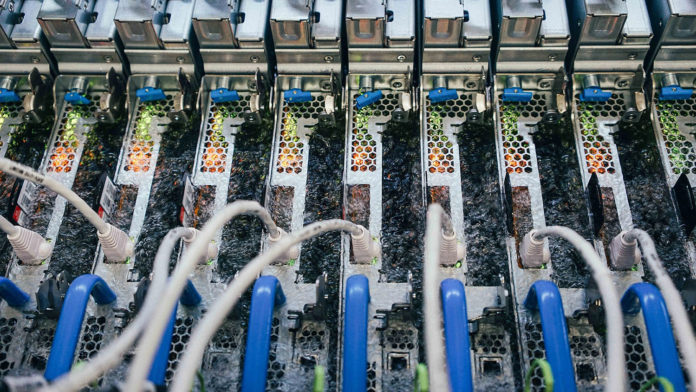Microsoft is currently testing a new cooling system with boiling liquid for its data centers, called two-phase immersion cooling. Communications sent between Microsoft employees are literally making liquid boil inside a steel holding tank packed with computer servers at this data center on the eastern bank of the Columbia River.
Unlike water, the non-conductive cooling fluid inside the couch-shaped tank is harmless to electronic equipment and engineered to boil at 122 degrees Fahrenheit (50 degrees Celcius), 90 degrees lower than the boiling point of water.
Microsoft hasn’t identified the fluid used, though it does explain how it works. When the heat generated by the working servers is transferred to the fluid, it evaporates and drives the heat away from laboring computer processors. Obviously, this process is facilitated because boiling is reached at a lower temperature than usual.

The low-temperature boil enables the servers to operate continuously at full power without the risk of failure due to overheating. Inside the tank, the vapor rising from the boiling fluid contacts a cooled condenser in the tank lid, which causes the vapor to change to liquid and rain back onto the immersed servers, creating a closed-loop cooling system.
“We are the first cloud provider that is running two-phase immersion cooling in a production environment,” said Husam Alissa, a principal hardware engineer on Microsoft’s team for advanced datacenter development in Redmond, Washington.
That couch-shaped tank is filled with an engineered fluid from 3M. 3M’s liquid cooling fluids have dielectric properties that make them effective insulators, allowing the servers to operate normally while fully immersed in the fluid.

Microsoft assures that the cryptocurrency industry pioneered liquid immersion cooling for computing equipment, using it to cool the chips that log digital currency transactions. Internal studies also indicate that two-phase immersion cooling is capable of reducing the power consumption for any given server by 5% to 15%. And this has been feasible, even for teams dedicated to high-performance computing applications such as AI.
According to Microsoft, the shift to two-phase liquid immersion cooling enables increased flexibility for the efficient management of cloud resources and allocates sudden spikes in datacenter compute demand to the servers in the liquid-cooled tanks.
Adding the two-phase immersion-cooled servers to the mix of available compute resources will also allow machine learning software to manage these resources more efficiently across the data center, from power and cooling to maintenance technicians.
Microsoft’s goal is to make data centers more sustainable and efficient to build, operate and maintain. Therefore, the company is also exploring the potential to use hydrogen fuel cells instead of diesel generators for backup power generation at datacenters. In the future, it is hoped to be able to develop closed systems such as these that could be deployed under a 5G cellular communications tower in the middle of a city for applications such as self-driving cars.
For now, Microsoft has one tank running workloads in a hyper-scale data center. For the next several months, the Microsoft team will perform a series of tests to prove the viability of the tank and the technology.
